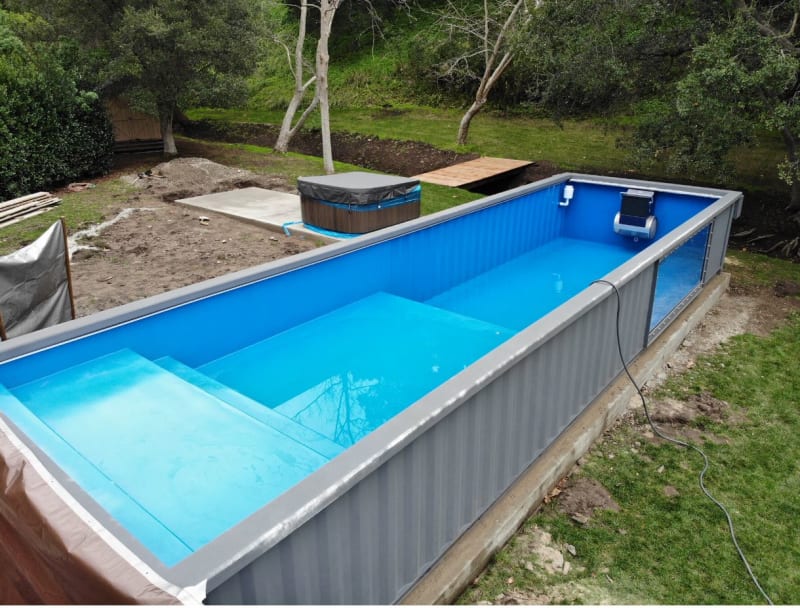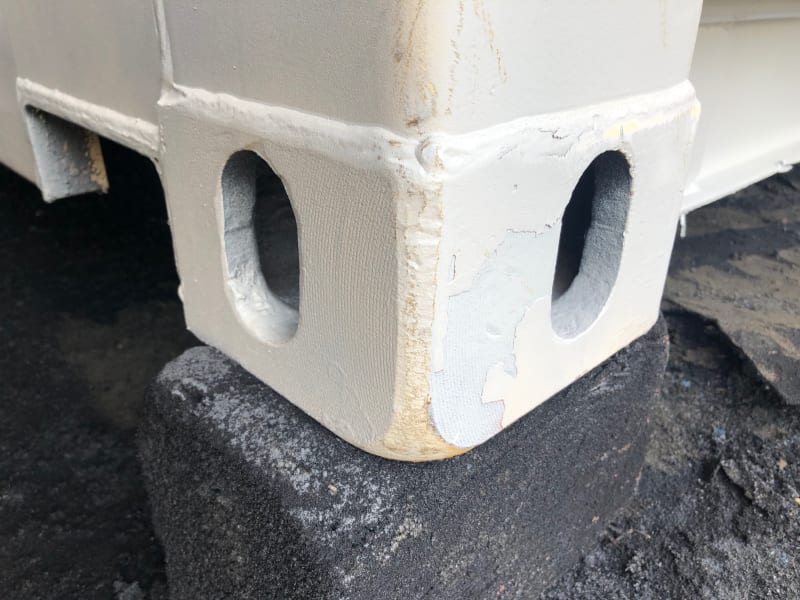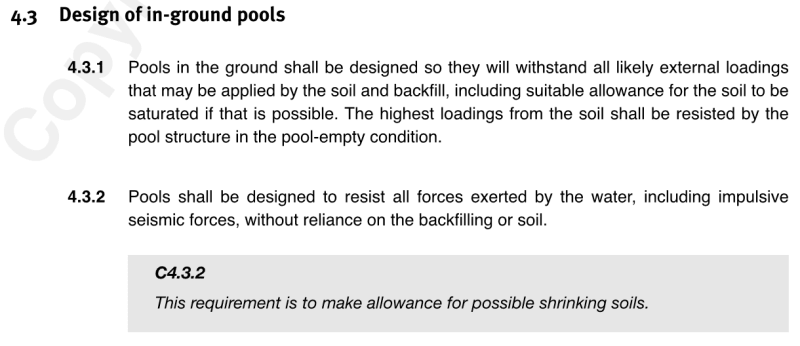Here's the situation:
- Fancy house design in California.
- 20 miles from the San Andreas.
- 6' deep, outdoor swimming pool with some plexiglass windows on the side.
- Pool rests on a pile supported concrete slab with the bottom of the pool about 18" above grade on the downhill side.
- Pool is a steel framed thing designed by somebody else.
- Anchorage may well be designed by somebody else.
Here's the question: do I/we need to get serious about the anchorage of this thing as though I were designing a tank structure per ASCE7? You know, free-board, sloshing, over-strength, ductile failure modes... all that jazz. On the one hand, I know of no relaxation that would apply to the design of such a thing relative to a conventional tank. On the other hand, I struggle to imagine conventional residential design getting into this level of detail for an at grade, outdoor pool. What are other folks doing in this regard? Is there, perhaps, some IRC/CRC get out jail clause that I don't know about?
In terms of real seismic risk, I'll confess that I don't consider this to be a very high risk situation. The worst I could see happening here is the pool sliding a bit off of it's support and maybe the the slab corner punching up through the pool bottom or something. Maybe a twisted ankle if somebody happens to be standing in the corner of the pool at go time. Or a crushed toddler if one happens to be taking a nap nestled up against the pool foundation when the 9.0 strikes. It's not like we'd be dumping toxic wast into the water supply or anything.
Please advise. Big below of a similar situation but not my situation. Mine's grade beams and piles and on a site with much more slope to it.

- Fancy house design in California.
- 20 miles from the San Andreas.
- 6' deep, outdoor swimming pool with some plexiglass windows on the side.
- Pool rests on a pile supported concrete slab with the bottom of the pool about 18" above grade on the downhill side.
- Pool is a steel framed thing designed by somebody else.
- Anchorage may well be designed by somebody else.
Here's the question: do I/we need to get serious about the anchorage of this thing as though I were designing a tank structure per ASCE7? You know, free-board, sloshing, over-strength, ductile failure modes... all that jazz. On the one hand, I know of no relaxation that would apply to the design of such a thing relative to a conventional tank. On the other hand, I struggle to imagine conventional residential design getting into this level of detail for an at grade, outdoor pool. What are other folks doing in this regard? Is there, perhaps, some IRC/CRC get out jail clause that I don't know about?
In terms of real seismic risk, I'll confess that I don't consider this to be a very high risk situation. The worst I could see happening here is the pool sliding a bit off of it's support and maybe the the slab corner punching up through the pool bottom or something. Maybe a twisted ankle if somebody happens to be standing in the corner of the pool at go time. Or a crushed toddler if one happens to be taking a nap nestled up against the pool foundation when the 9.0 strikes. It's not like we'd be dumping toxic wast into the water supply or anything.
Please advise. Big below of a similar situation but not my situation. Mine's grade beams and piles and on a site with much more slope to it.



